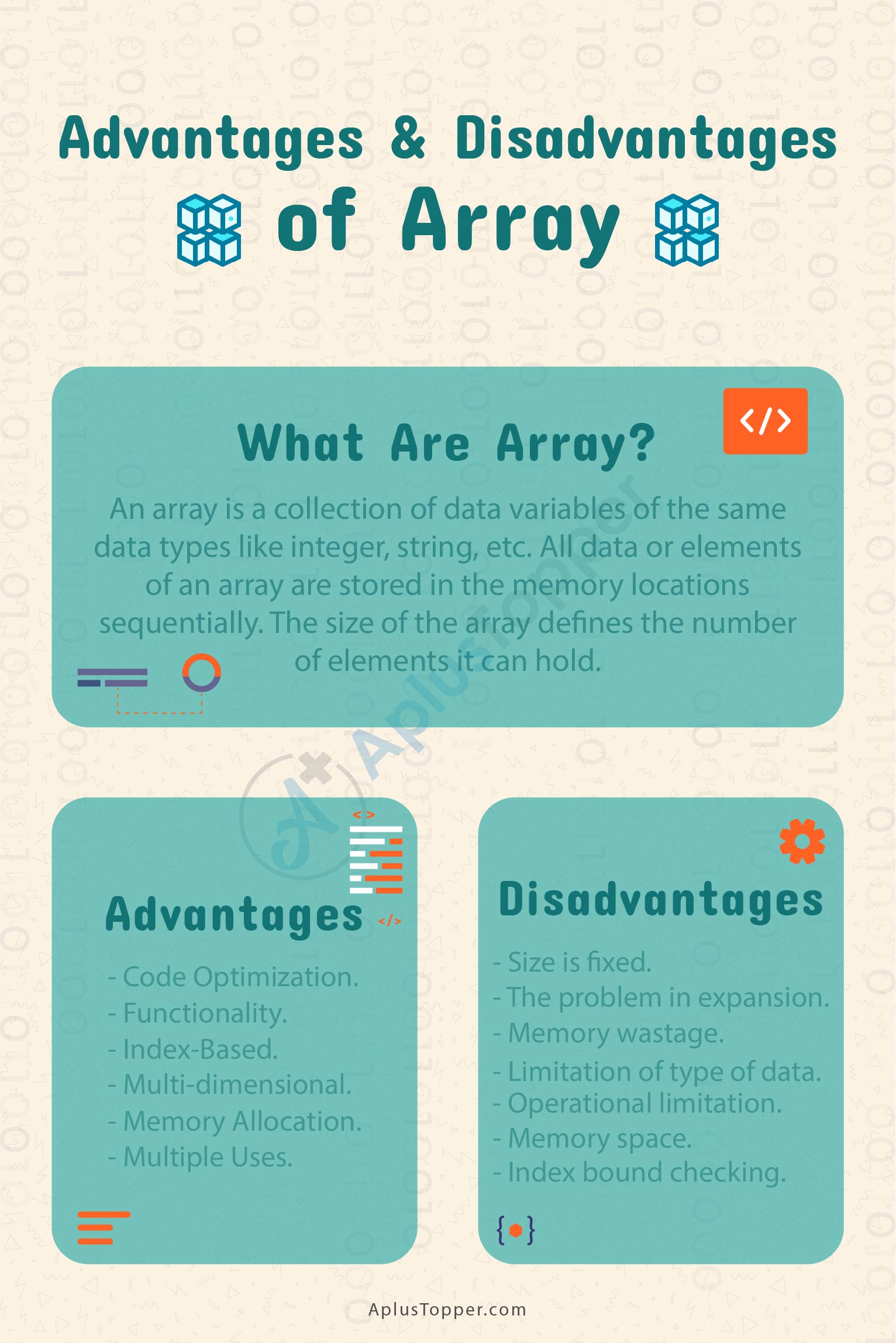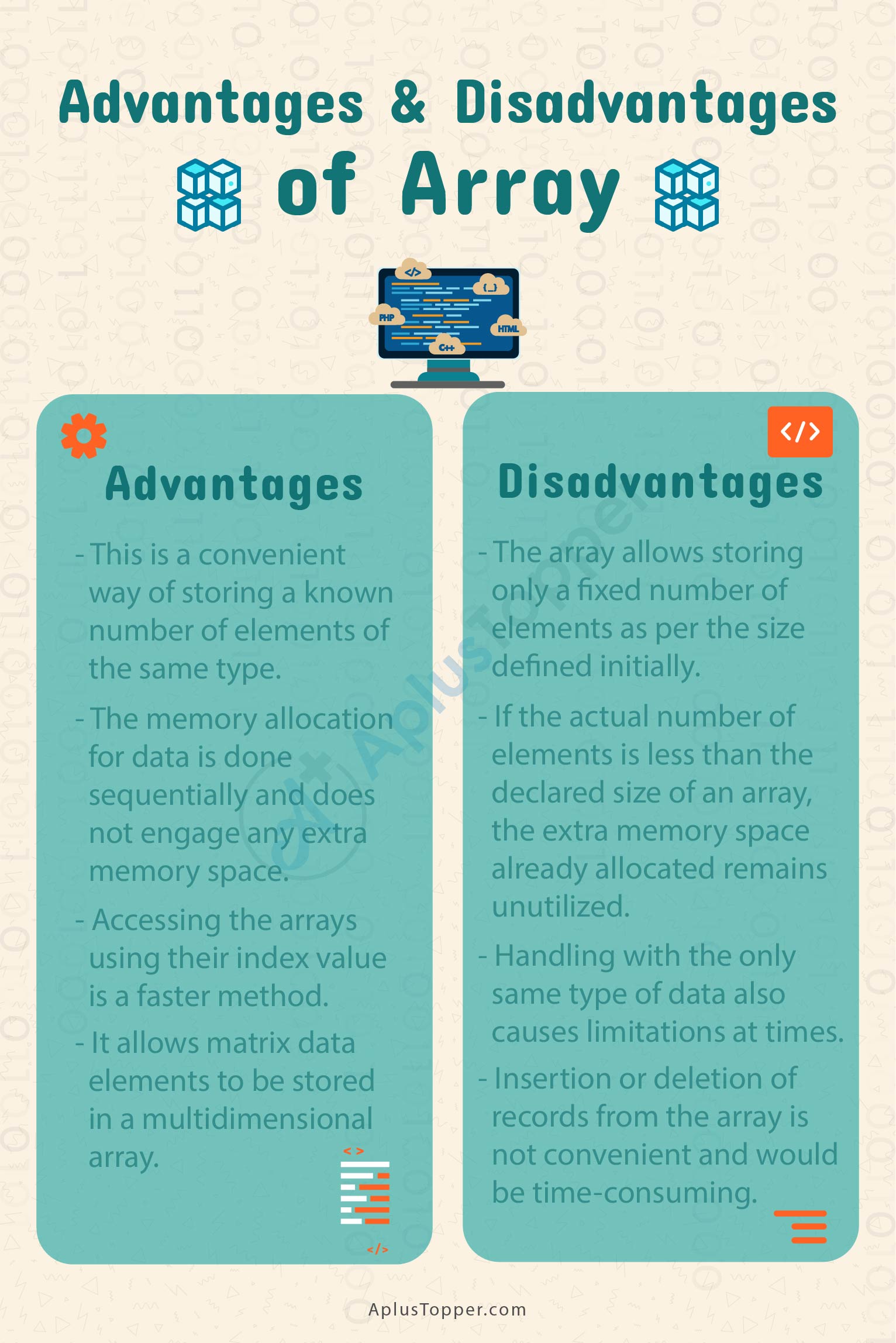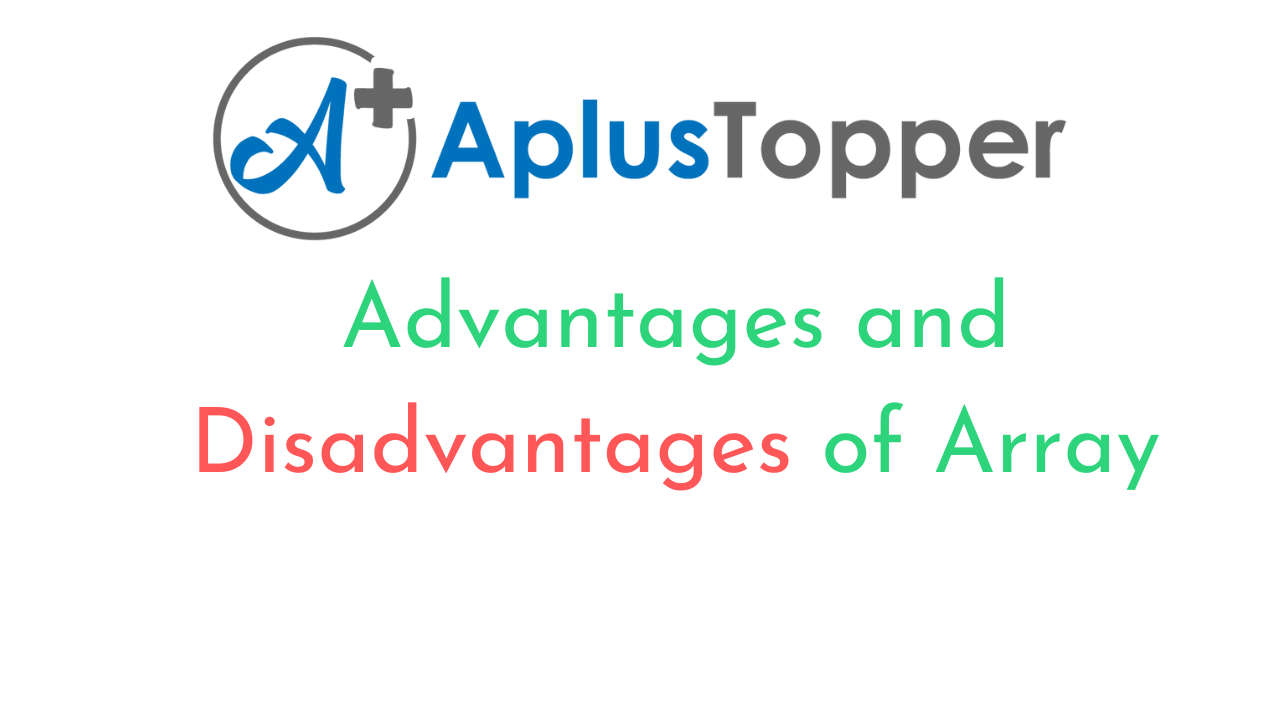Array Advantages And Disadvantages: An array is an important concept of data structure that is used to store data of a specific type of values or strings in memory locations of computers in a sequential manner. An array is static which means the size of the array is defined initially and cannot be increased or reduced at a later stage. Therefore we must get an idea about the number of elements to be stored in an array from the beginning. Arrays are the best choice to store an ordered set of data. This data structure can be used to store data of different types but a single array contains only a single type of data.
An array is a structure for storing data in memory locations which is tracked by its index values. Each element in an array is stored and accessed against a particular index number. The name of the array defines the data type that is stored in the array. The array can hold multiple values or characters of the same type under a single reference name. Data type and the number of elements of an array are defined at the beginning stage to allocate the memory space which can’t be changed at a later stage. These arrays have been used extensively in executing lengthy programs.
Students can also find more Advantages and Disadvantages articles on events, persons, sports, technology, and many more.
- What Are Array? Advantages And Disadvantages of Array 2022
- Advantages of Array
- Disadvantages of Array
- Comparison Table for Advantages And Disadvantages of Array
- FAQ’s on Array Advantages And Disadvantages
What Are Array? Advantages And Disadvantages of Array 2022
An array is a collection of data variables of the same data types like integer, string, etc. All data or elements of an array are stored in the memory locations sequentially. The size of the array defines the number of elements it can hold. The array is a random access data structure of elements tracked by its index values. The elements stored in an array are identified by their index which generally starts from zero and increases sequentially. This index is a constant integral value and must be declared at the time of compiling the data.
elements in an array can be accessed by the name of the array and an integer index value. The array name is followed by the index value enclosed in a square bracket. The name of the array defines the data type that is stored in the array. The array can hold multiple values or characters of the same type under a single reference name. In complex data structures, arrays can be used in the multidimensional form of stack and queues.

Advantages of Array
- Code Optimization: An array allows storing and access of a large number of values by writing a small piece of code instead of declaring each variable separately.
- Functionality: Arrays are one of the most basic data structures and are used for processing many algorithms like searching and sorting, maximum and minimum values, reversing, etc. in simple and easy ways.
- Index-Based: Arrays use an index-based data structure which helps to identify each of the elements in an array easily using the index.
- Multi-dimensional: Arrays can handle complex data structures by storing elements of a matrix in 2-dimensional arrays.
- Memory Allocation: Arrays store elements in a sequential manner in memory locations, so no extra memory is allocated thus preventing the wastage of memory.
- Multiple Uses: The basic data structure of arrays can be used to form different data structures like stacks, queues, graphs, trees, etc.
Disadvantages of Array
- Size is fixed: An array is static in the sense that the size of an array is fixed. The memory allocated to an array cannot be expanded or shrunk. This does not allow storing extra data in case of any requirement. This may sometimes lead to loss of data if the allocated memory to an array is less than required.
- The problem in expansion: If array size is required to be increased during the development process at a later stage, then the only option is to discard the present array and create a new array of an enlarged size that meets the requirement. But the possibility of changing the size again still exists as the application grows.
- Memory wastage: The size of an array is declared at the beginning based on some requirement that can’t be changed. So the memory is allocated accordingly. But if at a later stage the size requirement becomes less then memory wastage happens. For example, for a declared array size of 50, if we get only 38 elements to store, there is wastage of 12 elements storage space.
- Limitation of type of data: A single array is homogeneous which means only one type of data can be stored in one array but cannot store values of different data types. But in real-life scenarios, we may require storing of elements of different types such as string (student name) integer (roll number), etc. which is not possible.
- Operational limitation: As arrays store data in contiguous memory locations, it becomes difficult to carry out the deletion and insertion operations in arrays. It also involves a lot of time as we need to shift other elements one position ahead or back respectively.
- Memory space: At the beginning of the setting of arrays, developers often declare large array sizes to be on the safe side to avoid any problem arising out of any future data expansion. This leads to the creation of large arrays occupying much space.
- Index bound checking: In C language, if any code is written that is outside the range of index values of an array, the compiler does not perform index bound checking or signal any error. But at the time of access to the data the compiler shows a run time error or gives garbage value.

Comparison Table for Advantages And Disadvantages of Array
| Advantages | Disadvantages |
| This is a convenient way of storing a known number of elements of the same type. | The array allows storing only a fixed number of elements as per the size defined initially. There is no provision for increasing the size of the array to accommodate extra data afterward if required. |
| The memory allocation for data is done sequentially and does not engage any extra memory space. | If the actual number of elements is less than the declared size of an array, the extra memory space already allocated remains unutilized. |
| Accessing the arrays using their index value is a faster method. | Handling with the only same type of data also causes limitations at times because, in an actual scenario, there can be a requirement to use multiple types of data in array form. |
| It allows matrix data elements to be stored in a multidimensional array. | Insertion or deletion of records from the array is not convenient and would be time-consuming as we need to manage indexing and memory space. |
FAQ’s on Array Advantages And Disadvantages
Question 1.
Why is it necessary to declare the number of elements of an array at the time of compilation?
Answer:
It is necessary because the size of the array can’t be changed to store more elements on run-time.
Question 2.
How index values are assigned to the elements of an array?
Answer:
Index value starts from ‘zero’ to the ‘length of array -1’ for each element of the array.
Question 3.
How larger size arrays may lead to wastage of memory space?
Answer:
Sometimes an array is declared to make provision of more elements but in actual cases less data is stored thus making the extra space wasted as the memory already allocated can’t be reduced.
